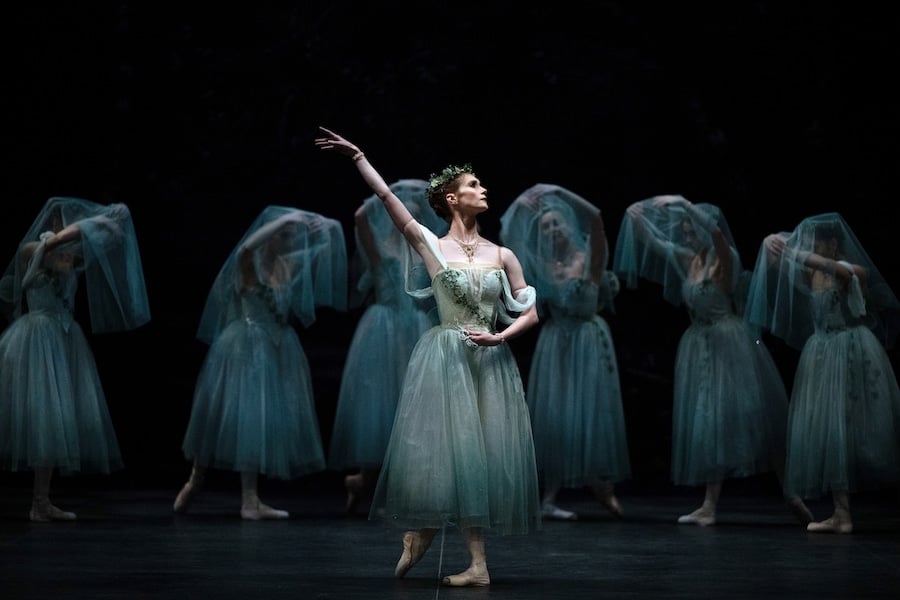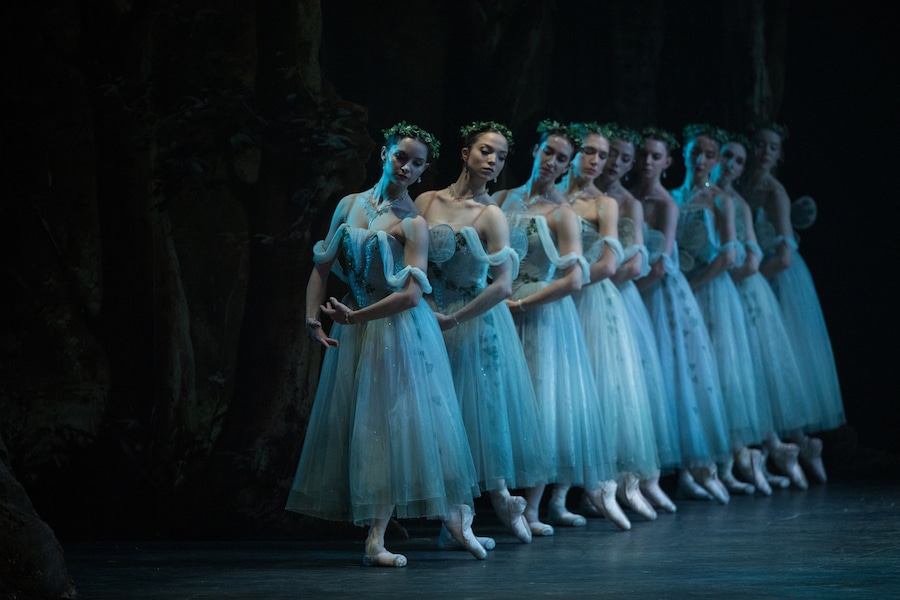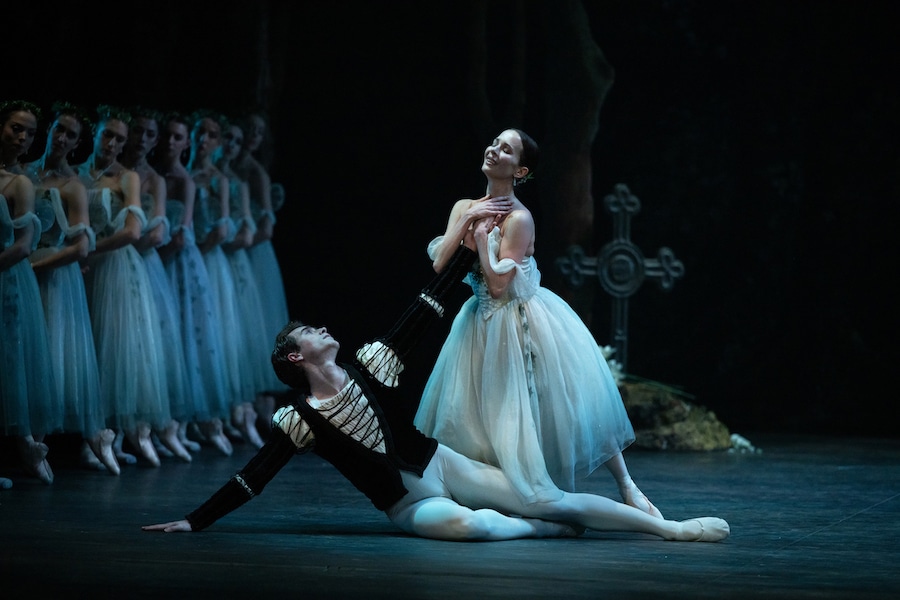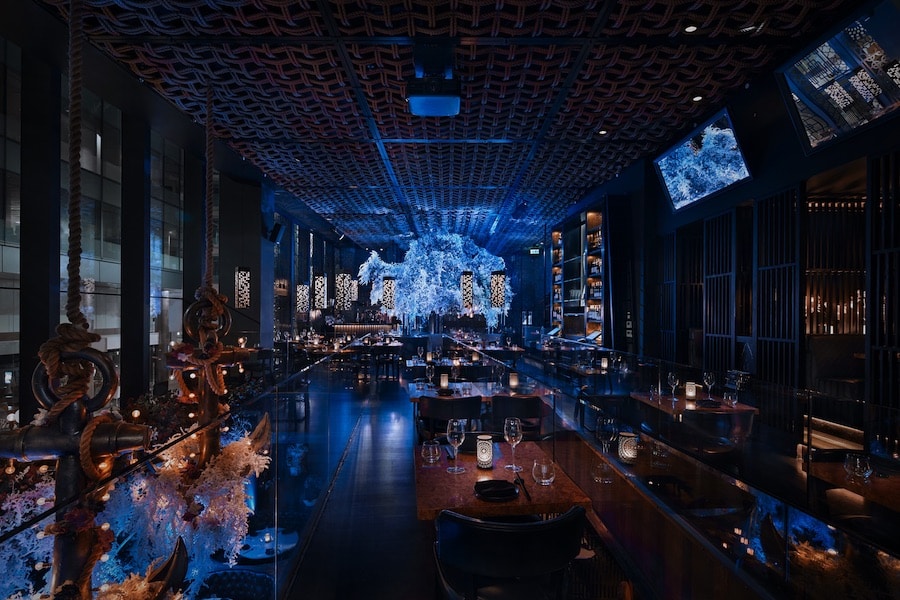Review: Giselle at Palace Theatre is ‘an exquisite blend of passion, drama and love from the great beyond’
- Written by Thom Bamford
- Last updated 2 months ago
- City of Manchester, Culture, Featured, Sponsored, Theatre

In Mary Skeaping’s revered production of Giselle, the story of innocence, betrayal and love beyond death comes alive with a haunting beauty that few ballets can rival.
Presented at the Palace Theatre after a successful run in London, Giselle shines with the magic and passion that have captivated audiences for years.
Giselle at the Opera House

It’s no small feat to bring such a honoured tale into the modern age with authenticity and freshness, but English National Ballet achieves this with grace and poignancy, aided by standout performances from Erina Takahashi as Giselle and Francesco Gabriele Frola as Albrecht.
The story of Giselle follows a young peasant girl, Giselle, who falls in love with Albrecht, unaware that he is a nobleman already engaged to another.
When the truth of his deceit emerges, Giselle is driven to madness and dies of a broken heart.
In the ethereal second act, her spirit joins the ranks of the Wilis, vengeful spirits of jilted brides who force men to dance to their death.
However, Giselle’s enduring love ultimately saves Albrecht from a dark fate.
This timeless ballet, brought to life by Skeaping’s meticulous choreography (originally conceived by Jean Corali and Jules Perrot) and David Walker’s exquisite set design, captures the tragic beauty of a love that transcends betrayal and death.
Outstanding performances by Erina Takahashi and Francesco Gabriele Frola

At the heart of this production are the outstanding performances by Erina Takahashi and Francesco Gabriele Frola who bring complexity and depth to their roles.
Takahashi’s Giselle is the embodiment of innocence, with a touchingly shy and delicate demeanour that endears her to the audience.
In the first act, set in a picturesque Rhineland village, she portrays Giselle’s youthful exuberance and pure-hearted love with an infectious lightness.
Her chemistry with Frola’s Albrecht is palpable, making Giselle’s ultimate heartbreak all the more tragic.
Takahashi’s portrayal of the iconic ‘mad scene’ is powerful yet restrained, allowing the raw emotion of her grief to take centre stage without veering into melodrama.
Frola, as Albrecht, is equally compelling.
With an aristocratic presence that contrasts with his disguise as a peasant, he captures the complexities of a man torn between genuine affection for Giselle and the weight of his social obligations.
His guilt and regret become heartbreakingly evident in the second act, where he dances with a haunted intensity that underscores Albrecht’s remorse.
Frola’s technique is flawless, his movements fluid yet controlled, making his journey through sorrow and redemption both believable and profoundly moving.
Act 1
David Walker’s set design for Act I transports the audience to a sunlit village in the Rhineland, where Giselle lives her simple, joyful life.
The idyllic setting, complete with vine-covered cottages and a soft, pastoral palette, perfectly reflects the innocence of the world Giselle inhabits.
The ensemble of villagers, including the charming performances by Laura Hussey as Berthe, Giselle’s doting mother, and the dynamic peasant pas de deux by Ivana Bueno and Lorenzo Trossello, enhances the sense of community and warmth.
Outstanding set design from David Walker
David Walker’s design envelops the stage in an inviting rustic charm, which makes the coming tragedy all the more striking.
The costumes for the first act are equally delightful, with peasant skirts and blouses in earthy tones that add to the sense of pastoral simplicity.
The attention to detail in the costume design complements the authenticity of Skeaping’s choreography, which returns to the original gestures and mime sequences that were part of the ballet’s 1841 premiere.
These subtle touches not only enrich the storytelling but also honour the ballet’s heritage.
Act II
In the second act, Walker’s set undergoes a breathtaking transformation to evoke the ghostly realm of the Wilis.
The once-bustling village setting gives way to a mist-shrouded forest, where the branches seem to reach out like skeletal fingers, casting eerie shadows across the stage.
The moonlight filtering through the trees creates an otherworldly atmosphere that perfectly complements the supernatural theme of the act.
It’s in this haunting setting that Giselle, now a spirit, joins the Wilis under the command of their imperious queen, Myrtha, played with chilling authority by Julia Conway.
As the Wilis appear in their ghostly veils and spectral white costumes, they transform the stage into a chilling vision of vengeance.
The corps de ballet, with their synchronised movements and ethereal poses, evoke a sense of quiet menace as they prepare to exact revenge on Albrecht.
Yet, within this dark setting, Takahashi’s Giselle remains a figure of compassion and forgiveness, protecting Albrecht from the fate the Wilis intend for him.
The contrast between the Wilis’ cold fury and Giselle’s loving spirit creates an emotional tension that resonates deeply with the audience.
English National Ballet Philharmonic, conducted by Maria Seletskaja
The English National Ballet Philharmonic, conducted by Maria Seletskaja, plays an essential role in bringing this production to life.
Adolphe Adam’s haunting score, with its romantic and melancholic melodies, underscores the emotional journey of the characters.
Maria Seletskaja’s sensitive interpretation of the music allows it to ebb and flow with the dancers, enhancing the dramatic intensity of both acts.
Her artistic direction is evident in every scene, with an authenticity that brings the story’s emotional and historical depth to the fore.
“A ballet accessible to modern audiences”
By restoring key mime scenes and adhering closely to the original choreography, Skeaping preserves the ballet’s integrity while making it accessible to modern audiences.
The quick, rounded movements, especially in the arms and torsos of the dancers, lend an authenticity to the production that feels true to the ballet’s Romantic origins.
The result is a performance that feels intimate yet epic, ancient yet timeless.
Giselle is a triumph of emotion and artistry
Mary Skeaping’s Giselle at the Palace Theatre is a showcase of the enduring power of this Romantic masterpiece.
With breathtaking performances from Takahashi and Frola, and a stunning set design that transitions from bucolic beauty to spectral darkness, this production captures both the innocence of young love and the haunting despair of betrayal.
Skeaping’s dedication to historical accuracy combined with the passion and skill of the English National Ballet make this Giselle a truly unforgettable experience.
For anyone who has ever loved, or lost, Giselle speaks to the heart. It reminds us of the power of forgiveness, the beauty of sacrifice, and the way love can transcend even death itself.
Tickets for Giselle at The Opera House
As the final notes of the score fade and the lights dim, you are left with a sense of having witnessed something truly magical.
Giselle will linger in the memory, much like the spirit of its tragic heroine, a haunting presence that remains long after the curtain falls.
Giselle is at Palace Theatre from Wednesday 30th Oct to Saturday 2nd Nov 2024.
You can get tickets to this wonderful production of Giselle at the Palace Theatre by clicking here
You can follow English National Ballet on Instagram by clicking here
- This article was last updated 2 months ago.
- It was first published on 30 October 2024 and is subject to be updated from time to time. Please refresh or return to see the latest version.
Did we miss something? Let us know: [email protected]
Want to be the first to receive all the latest news stories, what’s on and events from the heart of Manchester? Sign up here.
Manchester is a successful city, but many people suffer. I Love Manchester helps raise awareness and funds to help improve the lives and prospects of people across Greater Manchester – and we can’t do it without your help. So please support us with what you can so we can continue to spread the love. Thank you in advance!
An email you’ll love. Subscribe to our newsletter to get the latest news stories delivered direct to your inbox.
Got a story worth sharing?
What’s the story? We are all ears when it comes to positive news and inspiring stories. You can send story ideas to [email protected]
While we can’t guarantee to publish everything, we will always consider any enquiry or idea that promotes:
- Independent new openings
- Human interest
- Not-for-profit organisations
- Community Interest Companies (CiCs) and projects
- Charities and charitable initiatives
- Affordability and offers saving people over 20%
For anything else, don’t hesitate to get in touch with us about advertorials (from £350+VAT) and advertising opportunities: [email protected]

New year clean-up brings neighbours together to remove 500kg of rubbish from our streets

Champion of LGBTQ+ voices scores an MBE for ‘groundbreaking work’

Coronation Street’s Laura Littlewood talks theatre, community and comedy

Best bars and pubs to watch the football and live sport in Manchester

The very special toy shop where parents don’t pay a penny is open – and busier than ever
















